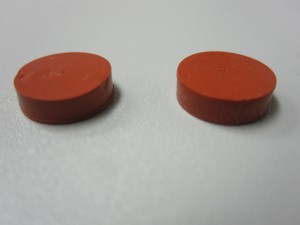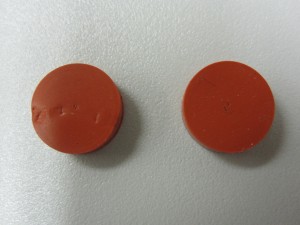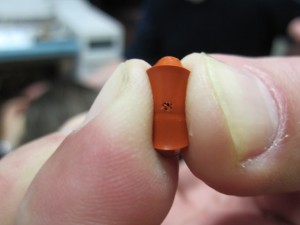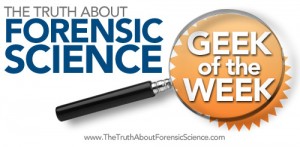Our good friend, Ron Moore, Esquire writes us “I actually had a client researching lawyers who looked at the Truth About Forensic Science geek of the week posts and liked my answers. It made a difference in who he decided to hire. Thanks!” So, there is a lot of value in www.TheTruthAboutForensicScience.com Forensic Science Geek of the Week Challenge. Try it out today.
Forensic Science Geek of the Week
Thanks to the combined inspiration of Christine Funk, Esquire and Chuck Ramsay, Esquire, a new twist of this blog is being introduced. A weekly fun forensic science challenge/trivia question. The winner will be affectionately dubbed “www.TheTruthAboutForensicScience.com Forensic Science Geek of the Week.”
Rules:
- The challenge will be posted Sunday morning 12 noon EST.
- Answers to the challenge will be entered by responding to this blog post or the www.TheTruthAboutForensicScience.com FaceBook fan page.
- All comments that are answers to this blog will released after 9pm EST.
- The first complete and correct answer will be awarded the envious title of “www.TheTruthAboutForensicScience.com Forensic Science Geek of the Week”
- “www.TheTruthAboutForensicScience.com Forensic Science Geek of the Week” is entitled a one time post of his/her picture on this blog and the www.TheTruthAboutForensicScience.com FaceBook fan page. The coveted title will be his/her for that week. Additionally, a winner will be allowed one link to one webpage of his/her choice. Both the picture and the weblink is subject to the approval of Justin J McShane, Esquire and will only be screened for appropriate taste.
- The winner will be announced Sunday night.
- A winner may only repeat two times in a row, then will have to sit out a week to be eligible again. This person, who was the two time in a row winner, may answer the question, but will be disqualified from the honor so as to allow others to participate.
- This is for learning and for fun. EVERYONE IS ENCOURAGED TO TRY TO ANSWER THE WEEKLY QUESTION. So give it a shot.
Here it is:
The www.TheTruthAboutForensicScience.com “Forensic Science Geek of the Week” challenge question. Remember the first full and complete answer wins the honor and also gets his/her photo displayed, bragging rights for the week and finally website promotion.
OFFICIAL QUESTION:



1. What are these?
2. What are they used for?
3. What can go wrong with them? Why?
The Hall of Fame for the www.TheTruthAboutForensicScience.com Forensic Science Geek of the Week:
Week 1: Chuck Ramsay, Esquire
Week 2: Rick McIndoe, PhD
Week 3: Christine Funk, Esquire
Week 4: Stephen Daniels
Week 5: Stephen Daniels
Week 6: Richard Middlebrook, Esquire
Week 7: Christine Funk, Esquire
Week 8: Ron Moore, B.S., J.D.
Week 9: Ron Moore, B.S., J.D.
Week 10: Kelly Case, Esquire and Michael Dye, Esquire
Week 11: Brian Manchester, Esquire
Week 12: Ron Moore, B.S., J.D.
Week 13: Ron Moore, B.S., J.D.
Week 14: Josh Lee, Esquire
Week 15: Joshua Dale, Esquire and Steven W. Hernandez, Esquire
Week 16: Christine Funk, Esquire
Week 17: Joshua Dale, Esquire
Week 18: Glen Neeley, Esquire
Week 19: Amanda Bynum, Esquire
Week 20: Josh Lee, Esquire
Week 21: Glen Neeley, Esquire
Week 22: Stephen Daniels
Week 23: Ron Moore, B.S., J.D.
Week 24: Bobby Spinks
Week 25: Jon Woolsey, Esquire
Week 26: Mehul B. Anjaria
Week 27: Richard Middlebrook, Esquire
WEEK 28: Ron Moore, Esquire
Week 29: Ron Moore, Esquire
Week 30: C. Jeffrey Sifers, Esquire
Week 31: Ron Moore, Esquire
Week 32: Mehul B. Anjaria
Week 33: Andy Johnston
Week 34: Ralph R. Ristenbatt, III
Week 35: Brian Manchester, Esquire
Week 36: Ron Moore, Esquire
WEEK 37: UNCLAIMED, IT COULD BE YOU!
Week 38: Pam King, Esquire
WEEK 39: IT COULD BE YOU!




Josh D Lee says:
Septa.
Used in a Gas Chromatograph machine. They are installed on the top side of the liner as part of the injector port. The needle goes through the septum and makes the injection into the GC
They must be airtight to prevent contamination and leakage of pressure. Either calls into doubt the accuracy of any results obtained of that machine.
Typing on the iPhone on an airplane on my way to the American Chemical Society national meeting, so forgive my brevity.
Brian Manchester says:
The items depicted are rubber septa. They are used to cover the injection port of a gas chromatograph. Their purpose is to seal the top of ths injection port so as to maintain equilibrium in the system.
How they work is they are put over the injection port and then screwed down into place. Then the injection needle is inserted into the septa to that maintains an air tight seal around the needle as it enters and exits the injection port. With multiple punctures of the septa the septa becomes weakened (as shown in the third picture) and it will lose its seal and carrier gas and possibly portions of the sample will leak out. As gas chromotography is based on Henry’s law which relies on a constant temperature, pressure, and flow. When the seal on the injection port leaks, the variables are changed and thus the final results are in doubt.
Jeff Sifers says:
These are Gas Chromatograph injection port / inlet septums. In GC/FID testing the flow of carrier gas passes across the face of the septum and then carries the sample into the column. The septums are used to seal injection ports on the GC preventing loss of carrier gas flow and any sample injection. Because of the constant perforation by syringes introducing sample in to the GC, the septums can leak thereby causing dramatic effects in the flow rate of the carrier gas and the end chromatographic sample result.
Robert Lantz, Ph.D. says:
These are silicone septa, generally used in the injection port of a GC. The bottom photo is an excellent reminder that a prime failure mode for the septum is multiple injections, which may produce a ragged hole in said septum. This can easily cause a change in the column head pressure. This can lead to spikes in the baseline.
In extreme cases, it can cause a loss in signal as the sample is expelled from the injection port, rather than into the column.
Note, too, that the GC on which this was used seems not to have a good sealing device (knife edge) in the injection port. One surface of the septum also seems to have had a chunk taken out of it. This, too, will cause poor sealing.
Stephen F. Daniels says:
1. What are these? Stoppers/seals for test tubes when taking a blood sample for a DUI.
2. What are they used for? To seal the test tubes – keep out any outside air/containiments
3. What can go wrong with them? the air seal breaks down. Why? because of high temperature (excess of 100 F) can damage the seal which lets outside air/containiments into the sample .
Justin J. McShane says:
You are right. You are going to be the Week 39 Forensic Science Geek of the Week!
Justin J. McShane says:
I think you mean it is to maintain the principles of Henry’s Law conditions (pressure, flow and temperature) and not “equilibrium”, and that it is actually pushed down into place but then the injector port top housing is screwed on tightly. You get Honorable Mention.
Justin J. McShane says:
Awesome. You get Honorable Mention.
Justin J. McShane says:
Man alive, just a little sooner and you would have made it. Honorable mention. Thanks.
Justin J. McShane says:
They are septa, but not for the venipunture tubes as you are thinking, but rather for GC. Check out our forensic science geek of the week answers. Thanks for trying.